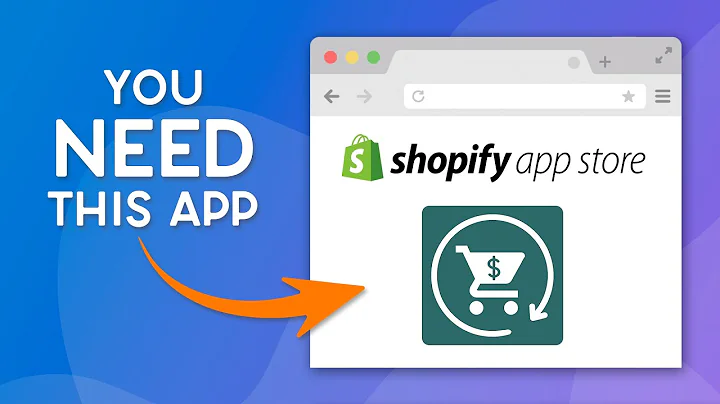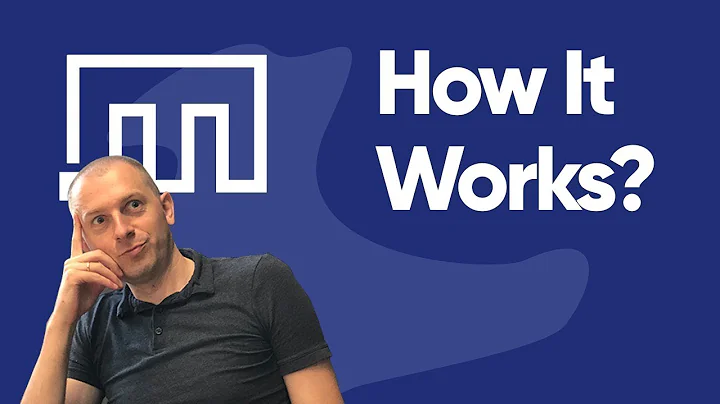From Zero to $300K in 60 Days: My Shopify Dropshipping Success Story
Table of Contents
- Introduction
- The Journey to 300K in Less Than 60 Days
- Testing and Scaling on Facebook Ads
- Finding the Product
- Creating Ad Sets and Testing Creatives
- Scaling the Winning Ads
- The Impact of Ad Account Bans and External Factors
- Challenges with Ad Account Bans
- Dealing with Delays and Refunds
- Analyzing the Profit and Loss Sheet
- Revenue and Expenses in the Testing Phase
- Revenue and Expenses in the Scaling Phase
- Selling the Store and Exiting the Business
- Strategies and Tips for Finding and Testing Products
- Researching on AliExpress
- Choosing Unique and Appealing Products
- Testing Strategies for Facebook Ads
- Conclusion
How I Went from 0 to 300K in Less Than 60 Days Using Facebook Ads for My Shopify Drop Shipping Store
The world of e-commerce and drop shipping can be both exciting and challenging. With the right strategies and execution, it is possible to achieve remarkable success in a short period. In this article, I will share my personal journey of how I went from zero to $300,000 in less than 60 days using Facebook ads for my Shopify drop shipping store.
The Journey to 300K in Less Than 60 Days
It all started with finding the perfect product. I conducted extensive research on AliExpress, focusing on categories that could appeal to a wide range of people. Mobile phone accessories seemed like a promising niche, as almost everyone owns a phone. After scrolling through various products, I stumbled upon a unique tripod that could help users take overhead shots with their smartphones. Intrigued by its potential, I decided to test it.
To test the product, I created a one-product store and developed three different ad creatives highlighting its unique features. I then set up a test campaign on Facebook, targeting broad audiences through single interest ad sets. After a couple of days, Facebook identified the winning ad and began spending the budget mainly on that particular ad. This verified the success of the product and its appeal to the target audience.
Testing and Scaling on Facebook Ads
Once I identified the winning ad and audience, it was time to scale the campaign. I doubled the budget and closely monitored the results. If the metrics remained favorable, such as a healthy cost per click (CPC) and a positive return on ad spend (ROAS), I gradually increased the budget. I repeated this process until I reached the maximum daily budget for that ad account.
I utilized various types of targeting, including look-alike audiences based on website visitors and specific actions performed on the website. These audiences consistently performed exceptionally well, resulting in high ROAS and low cost per click. Manual placement selection, focusing on mobile and Facebook/Instagram feeds, worked effectively during this period.
The Impact of Ad Account Bans and External Factors
Unfortunately, the journey was not without challenges. Ad account bans were a significant setback, leading to fluctuations in store performance. As I attempted to test new ads and restore momentum, I encountered difficulties with the supplier due to the pandemic's impact on shipping services. Delays and refunds became a prevalent issue, affecting profitability.
The period from May to July witnessed losses and struggles due to ad account bans and shipping disruptions. However, despite these setbacks, my store still generated a total revenue of $370,000, with net profits of $55,000. It was a testament to the inherent potential of drop shipping when executed effectively.
Analyzing the Profit and Loss Sheet
Reviewing the profit and loss sheet provided valuable insights into the financial aspects of the business. During the testing phase in February 2020, we recorded 75 orders, generating $5,700 in revenue. After deducting the cost of goods sold ($2,300) and other expenses, we achieved a gross profit of $3,200, resulting in a net profit of $830.
In the scaling phase, the monthly revenue surged to $113,000 in March 2020 and peaked at $220,000 in April 2020. However, expenses also increased significantly, including Facebook ads, merchant fees, and app costs. Despite these expenses, the net profit for March reached $22,000, and April yielded a net profit of $33,000.
Selling the Store and Exiting the Business
Due to persistent ad account bans and the challenges of maintaining momentum, I eventually made the decision to sell the store in July 2020. Fortunately, the store's success in the initial months compensated for the losses incurred during subsequent months. Selling the store allowed me to exit the business profitably.
Strategies and Tips for Finding and Testing Products
Finding successful products for drop shipping requires a combination of research, intuition, and testing. Browsing through AliExpress categories that have mass appeal is a good starting point. Look for unique and appealing products that are not readily available in local stores. Utilize the "more to love" section to explore related products, providing potential opportunities for unique offerings.
When testing products on Facebook, set up multiple ad sets with different creatives. Test single interest audiences and look-alike audiences based on website actions. Keep an eye on cost per click, return on ad spend, and engagement metrics to identify winning ads. Scale gradually by increasing budgets and monitoring metrics closely.
Conclusion
Achieving substantial success in drop shipping requires a combination of effective product selection, testing strategies, and scalability. By leveraging Facebook ads and identifying winning products and audiences, it is possible to achieve remarkable results within a short timeframe. However, it is crucial to remain adaptable and resilient in the face of challenges such as ad account bans and external factors affecting supply chains. With the right approach and determination, drop shipping can be an immensely profitable venture.
Highlights
- Went from zero to $300,000 in less than 60 days using Facebook ads for a Shopify drop shipping store.
- Found the winning product by conducting research on AliExpress and targeting unique and appealing items.
- Tested multiple ad creatives and identified the winning ad through Facebook's optimization algorithms.
- Scaled the winning ad and audience by gradually increasing budgets and leveraging effective targeting methods.
- Faced challenges such as ad account bans and shipping disruptions, but still achieved significant revenue and profits.
- Analyzed the profit and loss sheet to evaluate financial performance at different stages.
- Made the decision to sell the store and exit the business profitably due to persistent ad account bans.
- Shared strategies and tips for finding and testing products, emphasizing the importance of research and testing on Facebook.
- Highlighted the key factors contributing to success in drop shipping: effective product selection, testing strategies, and scalability.
- Reiterated the need for adaptability and resilience in navigating challenges within the industry.
FAQ
Q: How much did you spend on Facebook ads during the testing phase?
A: During the testing phase, I spent approximately $1,600 on Facebook ads.
Q: What were the major challenges you faced during scaling?
A: The major challenges during scaling were ad account bans and shipping disruptions, resulting in fluctuations in performance and increased refunds.
Q: How did you find the winning product on AliExpress?
A: I focused on categories with mass appeal, specifically mobile phone accessories. I scrolled through products and looked for unique items that stood out.
Q: What is the recommended daily budget for testing Facebook ads?
A: It is recommended to set a daily budget around 30% of the product's price. In my case, I started with $25 per day.
Q: How did you determine the winning ad set and scale it?
A: After testing multiple ad creatives, Facebook's optimization algorithms identified the winning ad. I then increased the budget gradually to scale the ad set.
Q: Did you face any issues with supplier delays and refunds?
A: Yes, due to the pandemic, shipping services faced delays and caused customer refunds, impacting profitability in certain months.
Q: How did you analyze the profitability of your store?
A: I reviewed the profit and loss sheet, considering revenue, cost of goods sold, refunds, merchant fees, and other expenses to determine net profit.
Q: Why did you decide to sell the store?
A: Persistent ad account bans and challenges with maintaining momentum led to the decision to sell the store, allowing for a profitable exit.
Q: How did you select target audiences for testing?
A: I utilized both single interest audiences and look-alike audiences based on website actions, such as view content and page visits.
Q: What are the key factors for success in drop shipping?
A: Effective product selection, testing strategies on Facebook, and scalability are key factors for success in drop shipping.






















